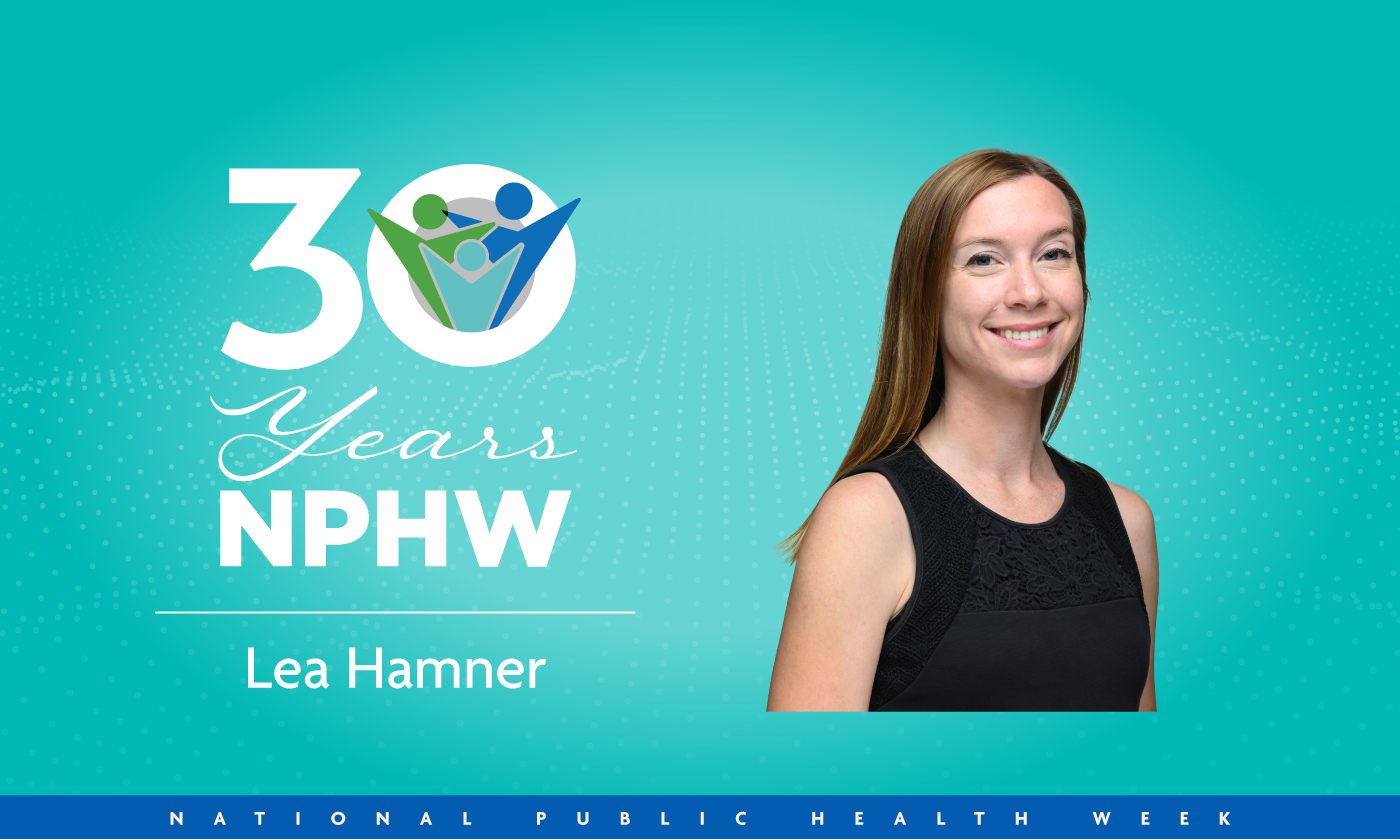Leaning on LEAD: How Lea Hamner Built an Epi Team with a Little Help from CSTE
By Ben Warden, CSTE Staff

Growing up, Lea Hamner didn’t have to go far to learn about the importance of public health. It was a regular topic at her dinner table.
“I actually was born into public health,” she said. Hamner’s mother
worked for the U.S. Agency for International Development (USAID) in the Philippines and Peru. Lea grew up abroad, immersed in her mother’s projects and passion.
“The talk around the dinner table was very interesting because
my mom was doing her dissertation on HIV prevention practices in sex workers in Peru,” Hamner said.
“So, I was 11 and I was doing arts and crafts at Christmas with the people she was working with. Just growing up with public health
being central to my mother's life meant that I was just a lot more cognizant of social determinants of health right off the bat.”
Despite her family connections to a public health career, Hamner initially thought she would study
pre-med at college. But she soon realized patient care wasn’t what she wanted to focus on.
Her next thought was to follow in her mother’s footsteps and travel abroad to work in global health. But after an internship with Partners
in Health in Guatemala, she decided her public health focus should be on her own community in Washington state and not thousands of miles away.
“I wanted to come back to my own community and be a part of the people who are actually
living out the policies and experiencing it firsthand,” she said. After college, Hamner moved to Washington state and began her infectious disease epidemiology career working in tuberculosis (TB) at Public Health-Seattle &
King County.
“It was a phenomenal place to start my career to really understand how complex things can get and how adaptable you need to be,” Hamner said.
In addition to TB, Hamner broadened her scope
after being hired as the first county epidemiologist in Skagit County, WA. She tackled a myriad of epi issues, including infectious diseases, opioid overdoses and maternal child health. She was then named operations section chief for Skagit County’s
(WA) COVID-19 response.
[Did You Know?: Skagit County, Washington borders where the first COVID case in the U.S. was identified]
In 2022, she moved across the country to build an epi program from scratch
once more: this time spanning 23 independent town health departments as a contract epidemiologist in Cape Cod, Martha’s Vineyad, and Nantcuket. Hamner jumped at the chance but quickly surmised that she needed some leadership advice and expertise.
Enter CSTE LEAD, a 12-month leadership program for mid-career epidemiologists looking for professional networking, mentorship, and skill-building.
“I did [CSTE’s] Early Career Professionals’
mentorship program and it was invaluable to me when I was starting off my career as an epidemiologist,” Hamner said. “I was just waiting for my opportunity to apply again for another mentorship opportunity and then I found out about LEAD from the
CSTE website.”
Hamner’s goals in joining the program were to talk to other epis who have had similar experience in building a department and the common issues they faced. Through the coaching, mentorship, and courses of CSTE
LEAD, Hamner learned how to navigate challenges more easily than if she was left to her own devices.
“I would've probably gone crazy if I didn't have CSTE LEAD,” she said. “I would've been in dire straits trying to negotiate all of
those different stakeholders [and] all of those different priorities without tools about how to have tough conversations.”
Hamner urges others in her position as a new epi leader to run, not walk, to CSTE LEAD.
The program helped her master challenges like stakeholder engagement, consensus building, managing up-and-down on strategic planning, and public health communications.
“It really is an incredible opportunity to engage with epidemiologists
outside of your organization,” Hamner said.
“Anyone who really wants to invest in their career and invest in their own personal growth would benefit from applying.”
Is CSTE LEAD right for you? Learn more about the program and how to apply to the next cohort!